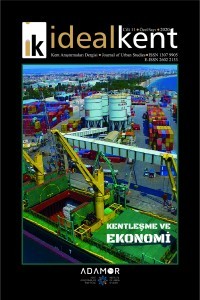
İDEALKENT
Yazarlar: Mihriban Şengül
Konular:-
Anahtar Kelimeler:Nature,Peasants,Concrete space,Abstract space,Appropriation,The simple reproduction squeeze,Capital trap,HEPP
Özet: In this article, I have tried to seek answer to these two questions about the anti-HEPP struggles of peasants: (1) “What is the type of relationship between peasants' relational interests with nature and the relationship of appropriating nature and the demands of protection of nature?” The structural properties of peasantry and conversion of peasantry under historical capitalism should not be ignored. Thus, I referred to concrete space, abstract space, and appropriation from Lefebvre for describing the structure of relationship between nature of peasants and the dynamics of conversion of this structure. (2) “What is the type of relationship between anti-HEPP peasantry movements and increasing penetration of capital on rural area, and peasants’ squeezing in capital trap?” Peasants strive to resist commoditization pressure of capital by increasing the rate of exploitation on their own labour and land (nature), looking for new sources of income and decreasing their life standards. In this process, it is important to find an opportunity for withdrawing from commoditized area. In this sense, the opportunities provided by nature and especially natural commons have critical importance. At this point here, I tried to explain relationships between the struggle of the peasants’ resistance against the commodification pressure of the market and the struggle of protecting non-commoditized area (not been subjected for property) by referring Lefebvre’s expression appropriation, Bernstein’s reproduction squeeze and Özuğurlu’s “capital trap to small peasantry” theories. I also included in theoretical context the historically determined structural characteristics of the peasantry and the distinctive conditions caused by the transformational influences of the rural-urban migration process in Turkey. This article is not based on a field research. I tried to seek answers to the questions above by taking advantage of the previous precedents based on field researches about peasants and nature relationship in Turkey and anti-HEPP peasant movements in addition to theoretical resources.
Dergi editörleri editör girişini kullanarak sisteme giriş yapabilirler. Editör girişi için tıklayınız.